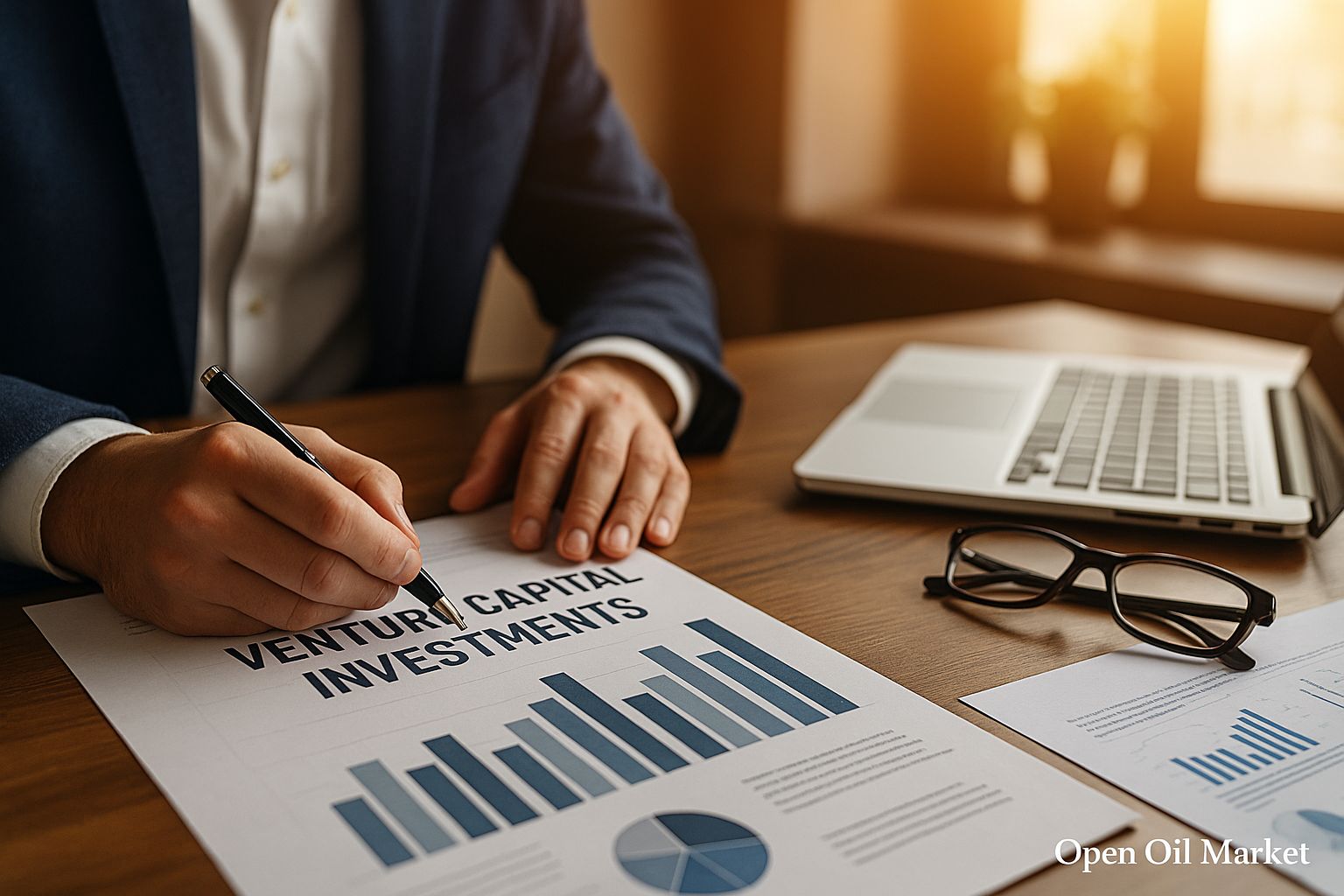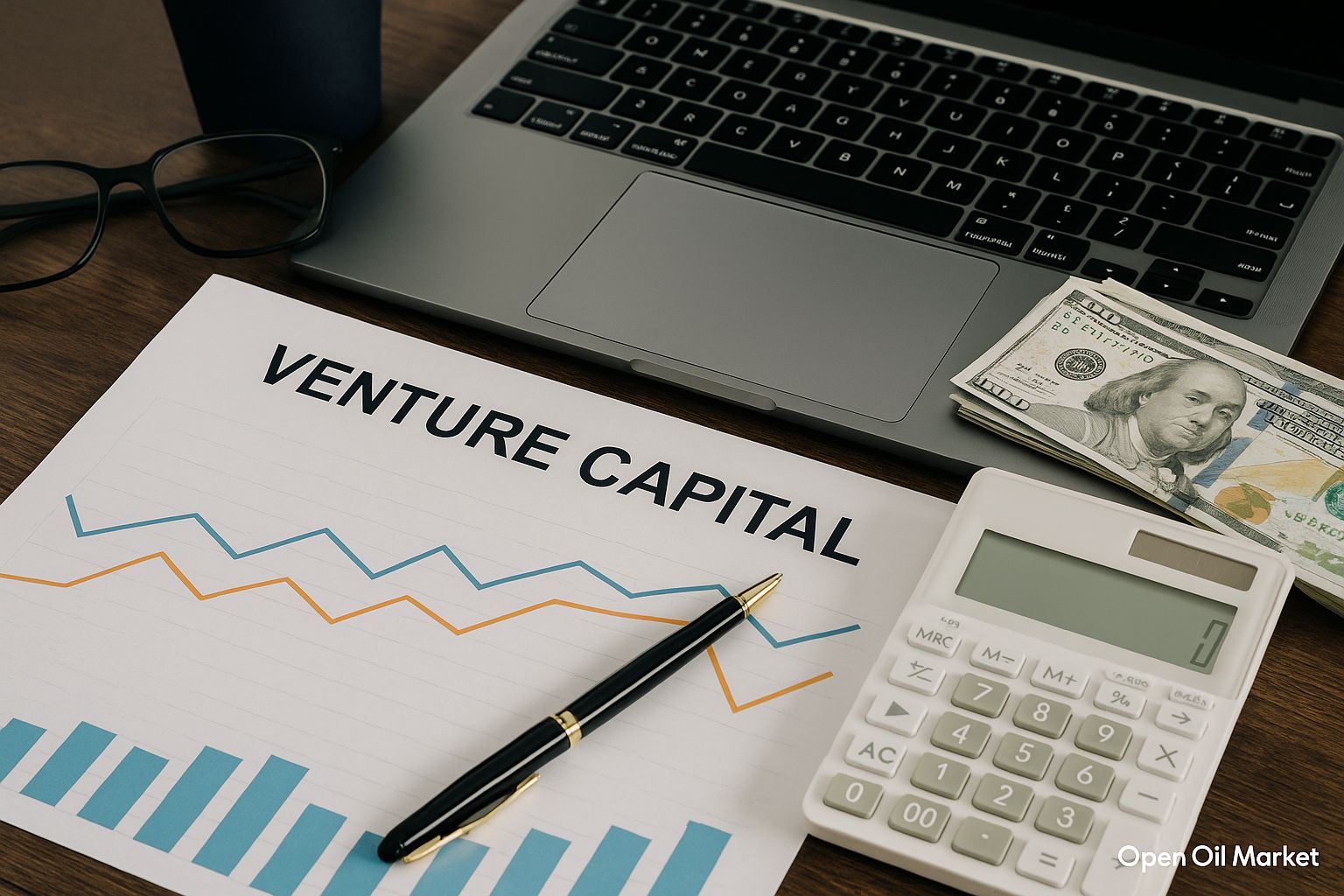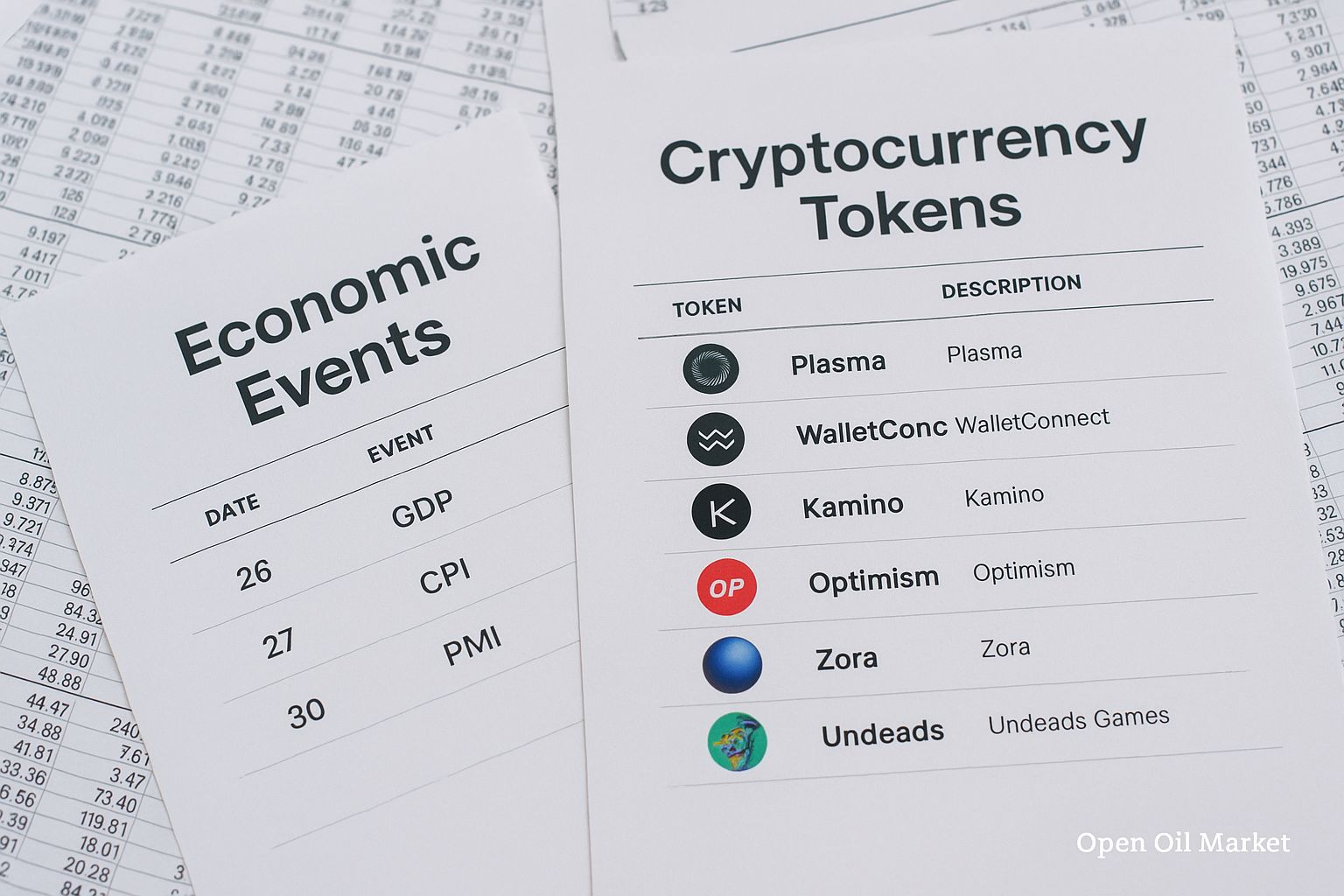
Current Startup and Venture Capital News as of September 19, 2025: Mega-Rounds in AI, New Unicorns, the Revival of IPOs, M&A Deals, the Renaissance of the Crypto Industry, and Growth in Defense and Space Investments.
As of mid-September 2025, the global venture capital market is confidently recovering after several years of decline. Investors worldwide are again ramping up funding for technology companies at all stages of development — from early seed rounds to preparing startups for IPOs. In the first six months of 2025, startups in North America raised approximately $145 billion, which is about 43% more than the previous year, marking the highest total for the first half of a year since 2021. Against the backdrop of an improved macroeconomic landscape and a rising interest in innovations, confidence in the venture market is strengthening: deals are getting larger and encompass a wide range of sectors, from artificial intelligence and fintech to biotechnology and defense. At the same time, caution prevails: funding is predominantly directed towards a limited number of promising projects to avoid overheating specific niches.
This venture upswing is being observed across all regions. The United States maintains its leadership, accounting for about two-thirds of the global investment volume (especially dominating in AI). In the Middle East, the amount of funding for startups nearly doubled over the year due to multi-billion dollar tech projects in the Gulf countries. In Europe, structural shifts are occurring: Germany has surpassed the UK in total venture deal volume for the first time in a decade, although Europe's share of the global VC pie has slightly decreased. India and Southeast Asia continue to experience an investment boom fueled by foreign funds, while in China, activity remains subdued due to domestic restrictions. The startup scenes in Africa and Latin America are also revitalizing, attracting increasing capital and creating new growth opportunities outside traditional tech hubs. Meanwhile, startups in Russia and the CIS strive to keep pace with global trends: despite external constraints, new funds and support programs are emerging in the region.
Below are the key trends and events in the venture market as of September 19, 2025:
- The Return of Mega-Funds and Large Investors. Leading venture players are raising record-sized funds and ramping up investments, refilling the market with capital and rekindling risk appetite.
- Record Funding Rounds and a New Wave of Unicorns. Exceptionally large deals are driving startup valuations to unprecedented heights, especially in the artificial intelligence and robotics segments.
- Reviving the IPO Market. A series of successful technology company IPOs signals the opening of a "window" for exits and the return of liquidity to the venture market.
- Diversification of Sector Focus. Venture capital is flowing not only into AI but also into fintech, green technologies, biotech, and other areas, broadening market horizons.
- A Wave of Consolidation and M&A Deals. Major mergers, acquisitions, and strategic investments are reshaping the industry landscape, creating new opportunities for exits and accelerated company growth.
- The Renaissance of the Crypto Industry. A rally in the digital assets market has rekindled investor interest in blockchain projects, leading to new large funding rounds and even public offerings in the crypto sector.
- A Boom in Defense and Space Investments. Geopolitical factors are stimulating capital inflow into defense-tech and space projects, making these areas a new priority for venture funds.
- Local Initiatives in Russia and the CIS. New funds and legislative measures are being launched in the region to support startups, as local projects begin to attract foreign capital and integrate into global trends.
The Return of Mega-Funds: Large Capital Back in the Market
The largest investment structures are once again entering the venture arena, signaling a new surge in risk appetite. Japanese conglomerate SoftBank has announced the launch of its third Vision Fund worth ~$40 billion, focused on cutting-edge technologies (with an emphasis on AI and robotics) after a long hiatus. Sovereign funds from the Gulf states have also come alive, injecting petrodollars into tech initiatives and state mega-projects, forming their own technology hubs in the Middle East. Simultaneously, numerous new venture funds are being established worldwide, attracting significant institutional capital for investments in high-tech sectors.
- Veritas Capital Fund IX – $14.4 billion. An American fund focused on technology and defense industries closed its new fund at a record amount, demonstrating a high level of trust from major institutional investors.
- Great Hill Partners IX – $7 billion. One of the largest growth funds targeting technology companies raised substantial funds, significantly exceeding its initial target size upon closing its new fund.
Notably, venture firm Andreessen Horowitz is also planning a mega-fund of $20 billion, entirely dedicated to investments in AI companies — if successful, this would become the largest fund in the firm’s history. The increased inflow of capital from such “mega-funds” leads to a sharp rise in the amount of uninvested capital (“dry powder”) in the market. In the American venture sector, funds have accumulated hundreds of billions of dollars ready to be invested as confidence returns. This amplifies the competition for the best startups and supports high valuations of promising companies. The mere presence of large institutional funds enhances the belief that the flow of capital into the sector will continue.
Mega-Rounds in AI and a New Wave of Unicorns
The field of artificial intelligence and other advanced technologies remains the main driver of the current venture boom, demonstrating record funding volumes. Investors are keen to position themselves among the leaders of the new technological cycle, directing colossal amounts into the most promising projects. Recently, several record deals have confirmed this trend:
- OpenAI (USA) – $8.3 billion. The AI technology developer secured one of the largest rounds in history, with a valuation of around $300 billion; together with Microsoft, the company is spinning off its business unit and preparing for an IPO.
- Mistral AI (France) – €1.7 billion. This generative AI startup received a record amount of funding in Europe, raising its valuation to €11.7 billion. The leading investor was the Dutch corporation ASML, highlighting Europe's ambitions in the AI infrastructure field.
- PsiQuantum (USA) – $1 billion. The quantum startup attracted the largest investment in its segment at a valuation of ~$7 billion, confirming investors' willingness to finance technologies beyond classical artificial intelligence.
- Figure AI (USA) – $1 billion+. The company developing humanoid robots secured over $1 billion in a Series C round at a valuation of approximately $39 billion — an unprecedented level for a robotics startup.
Such mega-rounds are forming a generation of new unicorns and accelerating the emergence of future tech leaders. Despite warnings about potential market overheating, investor appetite for advanced projects remains high. It is noted that funding is being directed not only to applied AI products but also to the infrastructure needed for them — specialized chips, cloud platforms, and data storage solutions required for scaling the AI ecosystem.
The IPO Market Awakens: A Window for Exits is Open
After a downturn in 2022–2023, the IPO market is once again showing signs of life. Successful public offerings of several technology companies demonstrate that investors are once more willing to buy shares in rapidly growing startups at high valuations. This new wave of market debuts is bolstering venture funds' confidence in the prospects for profitable exits.
- Chime. The American fintech unicorn (neobank) went public on Nasdaq in June; its stock price soared by 30% on the first day of trading, affirming strong investor demand for promising fintech companies.
- Klarna. The Swedish fintech giant debuted on the New York Stock Exchange, becoming one of the first European unicorns to list in the US after a lengthy pause. Shares were sold above the initial range and gained over 25% within hours of trading.
- Via. The American public transport technology developer raised ~$493 million in its IPO on NYSE, receiving a valuation of around $3.5 billion. This debut showcased the market's willingness to invest in new segments of transport services.
The success of these offerings indicates the return of liquidity to the venture market. Following these first “harbingers,” other major startups are preparing to go public — from the American payment service Stripe (reportedly having already filed a confidential IPO application) to highly valued AI companies like Databricks. The revival of IPO activity is crucial for the entire ecosystem: successful exits allow venture funds to lock in profits and redirect freed-up capital into new projects, fueling the next growth cycle.
A Wave of Mergers and Acquisitions (M&A)
High valuations of startups and fierce competition for markets are driving the industry toward a new wave of consolidation. Major tech corporations are again ready to spend billions on strategic acquisitions to strengthen their positions and secure cutting-edge developments. A number of high-profile M&A deals in recent months underscore this trend:
- Google → Wiz — ~$32 billion. Alphabet Corporation acquired the Israeli cloud cybersecurity startup to bolster its positions in data protection and cloud services.
- SoftBank → Ampere — ~$6.5 billion. The Japanese holding purchased the American server processor developer Ampere Computing, aiming to lead in chips for cloud and enterprise data centers.
The uptick in acquisition deals is shifting the balance of power in the industry. Mature startups are either merging with one another or becoming targets for corporations. For venture investors, this opens up opportunities for much-anticipated exits through the sale of portfolio companies to strategic players. At the same time, consolidation helps eliminate unnecessary competitors from the market and focus resources on the most promising directions.
Diversification: Fintech, Biotech, and Green Projects
Venture investments in 2025 are no longer concentrated solely on AI — capital is actively flowing into other sectors as well. After a slowdown last year, fintech is regaining momentum: major fintech startups are raising substantial amounts and renewing partnerships with banks. Concurrently, interest in climate and environmental projects is intensifying — from renewable energy and energy storage systems to electric vehicles and carbon footprint reduction technologies. The appetite for biotechnology is gradually returning: the emergence of new drugs and digital health services is once again attracting capital as company valuations in the sector recover.
- Kriya Therapeutics – $320 million. An American biotech startup specializing in gene therapy raised $320 million in Series D.
- Odyssey Therapeutics – $213 million. A biopharmaceutical company developing new treatments for serious diseases received $213 million in a Series D round.
- Nitricity – $50 million. A California-based clean technology startup secured $50 million for developing a zero-emission fertilizer production technology.
The expansion of sector focus is making the startup ecosystem more resilient, reducing the risk of overheating in specific niches. Investors are intentionally seeking new growth points beyond the ultra-popular AI, contributing to the emergence of promising companies across diverse fields.
The Renaissance of the Crypto Industry
The digital assets market is experiencing a new boom in the second half of 2025, rekindling venture capital interest in crypto startups. Bitcoin has already surpassed the historic threshold of $120,000, reaching an all-time high, followed closely by surges in the leading altcoins. Just a year ago, the blockchain sector was facing a crisis of confidence and harsh regulatory pressures; however, the current rally has radically changed investor sentiment.
Large funds that had previously suspended investments in crypto projects are once again entering the market. Massive funding rounds are being recorded, with some players even going public. For example:
- Circle. The fintech company in the digital currency space successfully conducted an IPO, becoming one of the first major “crypto-friendly” firms to list.
- Gemini. The cryptocurrency exchange attracted $50 million from Nasdaq Ventures ahead of its own stock public offering.
- BlackRock. The investment giant launched a Bitcoin-linked exchange-traded fund (ETF), a significant signal of institutional recognition for crypto assets.
All these events indicate that the blockchain industry is once again being perceived as a promising area for growth by investors.
Defense Technologies and Space at the Forefront
The geopolitical tensions of recent years have resulted in an unprecedented increase in investments in defense and aerospace sectors. Investments in defense-tech startups have skyrocketed: large funding rounds, such as the ~$2.5 billion raised by American autonomous systems manufacturer Anduril, demonstrate the willingness of venture capital to finance security projects. Investors (and in some cases, governments) are actively supporting developments in drones, cybersecurity, military AI systems, as well as new space programs and satellite platforms.
Defense and space sectors are quickly becoming a new priority for venture funds. The US has seen the emergence of several unicorns in aerospace technologies, while European defense startups have garnered significant capital inflow amid changing geopolitics. For instance, California-based standardized satellite platform manufacturer Apex raised $200 million in a Series D round to accelerate mass production of spacecraft in response to growing demand. Overall, venture investments in “power” sectors promise not only commercial returns but also strategic advantages, making them attractive even to relatively conservative investors.
Russia and the CIS: Local Trends Amidst the Global Market
Despite external constraints, the startup scene in Russia and neighboring countries is developing parallel to global trends. In 2025, new sources of capital and initiatives supporting the tech business have emerged in the region:
- New Funds. A private fund, Nova VC (around 10 billion rubles), has started operating in Russia, while in Tatarstan, a sector-specific venture fund "New Chemical Industry" (~5 billion rubles) has been established to finance regional innovative projects.
- Government Support. Authorities are discussing a separate law on venture investments. Among the stated goals are stimulating innovations and increasing R&D spending to 2% of GDP by 2030 (almost double the current level).
- International Success. Despite sanction barriers, CIS teams continue to attract funding from abroad. For example, the machine learning service Vocal Image, founded by expatriates from Belarus and operating in Estonia, secured ~$3.6 million from a French venture fund — proving that promising projects from the region can find support on the global stage.
Although the volumes of venture investments in Russia and the CIS still lag behind global leaders, all necessary elements of the ecosystem are taking shape: local funds, accelerators, governmental programs, and international partnerships. This creates a foundation for the emergence of local unicorns and deeper integration of regional startups into the global technological agenda.




